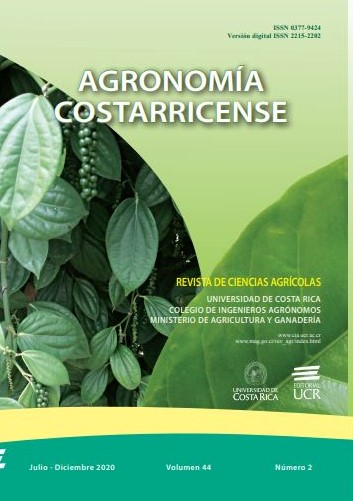Abstract
Introduction. The absence of economic information constitutes a barrier to the promotion of silvopastoral systems. The forest component represents a marginal contribution to the livestock economy, which maintains a high carbon footprint and occupies 43% of the territory. A new silvopastoral model of greater economic, social and environmental impact is required. Objective. To generate information on the costs of tree cultivation, in a silvopastoral design that manages to integrate the livestock business with that of wood. Materials and methods. The complete cost structure of the forest component is reported, based on melina and teak clones. The information from ordinary compact plantations was adapted to a strip tree cultivation system within a cattle farm, utilized in the northern region of Costa Rica. The information was differentiated in two scenarios, the high and low investment model, according to the technological package used. Results. The trees were planted within two fenced-strips of six meters wide per hectare at the boundaries of the grazing paddocks. Within the strips, trees were planted in an irregular distribution, at a distance of 2,5 m between rows and 4.0 m between trees, which allowed planting of 150 trees.ha-1 in a cycle of 8 years for melina and 16 years for teak. Conclusions. Total cost of growing melina in 2 strips.ha-1, in the high investment model was ₡751 759 (US $1307) and ₡966 818 (US $1681) for teak. In the low investment model, the total cost for melina was ₡545 739 (US $949) and ₡714 548 (US $1242) for teak. Labor represented 41% of the total costs in melina and 44% in teak. This silvopastoral design requires planting of 4.17 ha with melina and 5.5 ha with teak in order to obtain the same amount of wood as in a conventional plantation.
Keywords: Forest economy; livestock; forestry plantations; agroforestry systems.



